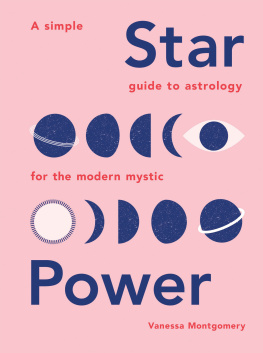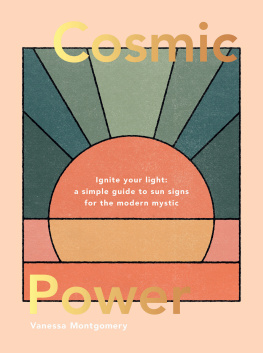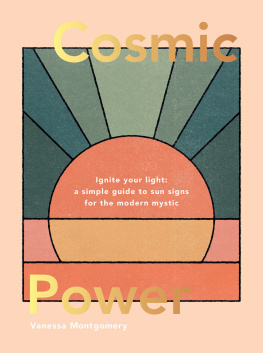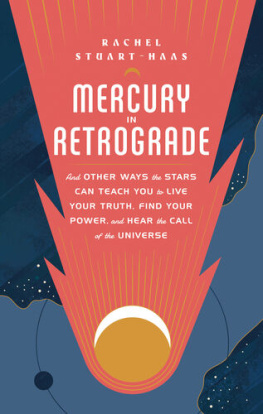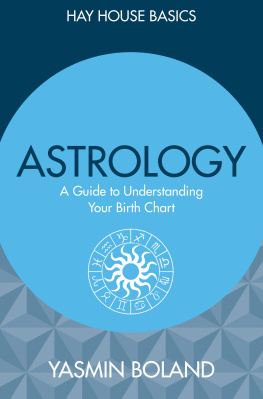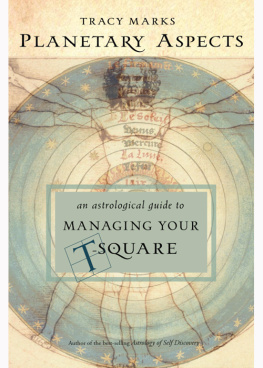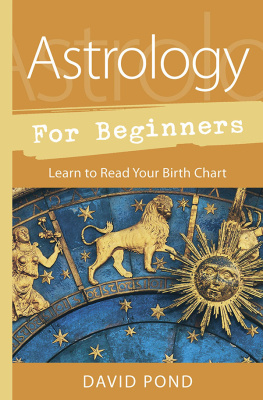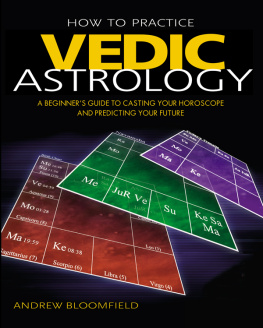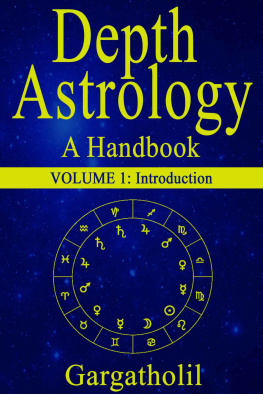Were ushering in an entirely new and exciting era of astrology. So many women are finding their inner modern mystic and tuning into a global spiritual awakening. We are becoming more empowered and finding ourselves in a privileged position: not only can we design and create our world, we can also redefine ourselves, our perceptions and our beliefs. Theres a burgeoning awareness that we need to create inner balance so we can express our potential as individuals, and do it in a way that works in harmony with everyone else. This isnt a luxury, this is essential if were to survive and thrive in a rapidly changing world. And astrology can provide us with the tools to do it.
Astrology essentially involves studying celestial objects planets, moons, stars and interpreting meaning from their movements and how they might affect everything in our Universe (including us!). It has been developed over thousands of years and its body of knowledge has been added to by many cultures; in the 21st century we have full access to this insightful system, which has been reloaded for the now-age woman.
The oldest known forms of celestial study and record-keeping are 32,000-year-old bone carvings and cave paintings of the Moons phases. You may be surprised to learn that astrology drove the development of both astronomy and mathematics: for millennia, science and the arts were seen as one multifaceted system. But as the holistic view of life became separated into branches of study, this connection was lost.
A basic timeline follows the development of astrology from Mesopotamia in around 6000 BCE through ancient Egypt to Babylon in around 2400331 BCE, then to Greece, on to the Roman Empire, Persia between 226 and 651 CE, Arabia from 750950 CE, and finally to Britain and Europe in the Middle Ages, where the house division system that we use today was created. Its widespread recognition declined with the rise of the power of the Christian church but in India, Vedic astrology continued on an unbroken path and remains in use to this day.
Renewed interest in Western astrology came in the 19th century along with a wave of non-denominational spiritualism, somewhat like the one were experiencing now. Star sign horoscopes appeared in tabloid newspapers in the 1930s and were the limit of what most people understood astrology to be until recently. Early-to-mid-20th-century psychologists like Carl Jung merged astrology and psychology, developing psychological, humanistic astrology. This is the modern style we use today. In the 1960s and 70s, social consciousness shifted radically as a whole generation rejected restrictive cultural codes, with many revisiting and further developing astrology as a tool for self-exploration. The years 2011 2026 have the astrological mark of being an ultra-spiritual cycle, involving a mass awakening of women searching for deeper meaning in life. As we seek to understand our reality, were embracing and further redefining astrology.
Over the centuries, organised religion has been threatened by the insights astrology offers, even going as far as banning its practise upon pain of death (its that powerful!). Modern science and rationalism tried to push it further to the sidelines, but science itself is beginning to validate the intuitively metaphysical side of reality through advances in the field of quantum physics. We understand that everything at the core is moving energy, and is composed mostly of empty space. Finally, science is catching up with what the ancient mystics have known for millennia. The analogy with life is that everything is energy, emanating from a void which is the creative space. Hello age of Aquarius enter the modern mystic!
Practical, psychological and cosmic, astrology is the ultimate selfie. Its a map to your inner psyche that spells out your strengths, weaknesses, potential, blind spots, complexes, and limiting perceptions. Knowledge is power! Which makes astrology a tool for self-reflection, a guide to how to best meet your potential in the world, relationships, career, finance, home and self-realisation. Discover your needs and you can attend to them, and communicate them more clearly to others.
Astrology helps us understand others and get along with them, and appreciate differences that once confounded us. Harness astro power for the inside scoop on anyone. Empower yourself with ancient knowledge for the modern woman!
Dont worry about understanding all these definitions straightaway. Come back to them as you make your way through the book and use them as a reminder of what the terminology is referring to. Not all of these terms are used in the book, but you might come across them later in your astrological journey of discovery, so keep in touch with these pages. Soon, youll be fluent in astro-speak!
Angular house These are the first houses that appear on each quarter of a birth chart: they are the 1st, 4th, 7th and 10th Houses. Planets in these houses are bestowed more importance than the other houses, especially if theyre at the very beginning of the house. They function with more power, immediacy and strength compared to planets found in the succedent and cadent houses.
Ascendant or Rising sign This is the sign rising on the horizon line where the sky meets the Earth. It will be at a specific degree of that sign. The 1st House marks this point on a birth chart so the sign on the cusp of the 1st House is your rising sign. The 1st House is always clearly marked, so you will quickly be able to identify your rising sign, and the degree rising will be marked alongside it. The rising sign represents the self while the opposite house, the 7th, represents the other, or you in relationship to the other (see descendant). The rising sign is the face we initially present in new situations and what others see when they first meet us. Its like a mask or the window dressing of a shop, which doesnt necessarily represent all thats inside. Together with understanding the Sun and the Moon in your birth chart, the rising sign is a key component.
Aspect A geometric angle between two points in a chart. Depending on the angle, the relationship between the two points will be different. The five major aspects are: conjunction, sextile, square, trine and opposition.
Astrology The system and study of meaning behind the movement of particular heavenly bodies and points in the sky, and the influence they have on human affairs as well as the natural world and events. There are many branches of astrology with different focuses, such as modern/psychological astrology (the subject of this book), traditional astrology, horary astrology.
Birth chart / Natal chart / Horoscope A snapshot of the Sun, Moon and planets (the sky) at the exact place and time of birth each person has a unique birth chart depending on where and when they were born. Its depicted as a 2D circle with 12 pieces representing the zodiac signs. The chart begins on the left-hand horizon line that intersects the circle horizontally, known as the ascendant. The chart is read anti-clockwise from that point. Astrologers rarely use the term horoscope for a birth chart, instead shortening it to chart, birth chart or natal chart. Horo means hour while scope means view, so, simply, view of the hour. The horoscope column you see in magazines is an interpretation of a chart calculated for that day, week or month. The birth chart is a horoscope specifically calculated for the time and place of birth of an individual.

